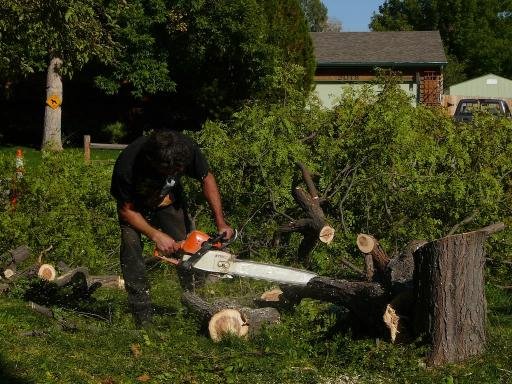Optimizing Tree Health: The Essential Guide to Tree Trimming Frequency
Trees, the majestic sentinels of our landscapes, not only enhance the aesthetic appeal of our environments but also play a pivotal role in maintaining ecological balance. A key aspect of tree care, often pondered by homeowners and property managers alike, is the frequency of tree trimming. This blog delves into this critical question, providing insights and guidelines to ensure your trees remain vibrant and healthy.
Factors Influencing Tree Trimming Frequency
The necessity for tree trimming is influenced by a variety of factors, each playing a crucial role in devising a tailored maintenance strategy:
- Growth Rate and Tree Type: Fast-growing species may require more frequent pruning than their slower-growing counterparts.
- Tree Age: Younger trees might benefit from regular shaping, while mature trees might need less frequent but more strategic pruning.
- Climatic and Environmental Conditions: Local weather patterns and geographic specifics can impact the trimming needs of trees.
- Overall Tree Health: Trees that are stressed or in poor health might need more attention to mitigate issues and promote recovery.

Recognizing the Need for Tree Trimming
Identifying the right time for tree trimming is key to proactive tree care. Look out for overgrown branches, signs of disease or decay, an uneven canopy, or evidence of pest infestation. Addressing these issues promptly can avert potential risks and promote the tree’s health.
The Multifaceted Benefits of Regular Tree Trimming
Consistent tree trimming transcends mere aesthetics, offering a multitude of benefits:
- Promotes Healthy Growth: Removing unhealthy branches redirects resources to healthier parts of the tree.
- Enhances Safety: Reducing overgrown limbs minimizes the risk of damage during adverse weather conditions.
- Boosts Aesthetic Appeal: A well-pruned tree maintains a pleasing shape, contributing to the overall beauty of the landscape.
- Improves Sunlight and Airflow: Strategic trimming can enhance the environmental conditions vital for a tree’s growth.
Guidelines for Tree Trimming Frequency
While specific needs can vary, general guidelines can help determine an appropriate trimming schedule:
- Based on Tree Type: Fast-growers may need attention every 3-5 years, whereas slow-growers might be fine with a 5-7 year interval.
- Considering Age: Young trees might require pruning every 2-3 years for shaping, with mature trees needing less frequent care.
- Seasonal Timing: Ideally, prune deciduous trees during dormancy and evergreens in late winter or early spring.
Environmental and Safety Considerations
Adopting environmentally friendly and safe tree trimming practices is essential. This includes choosing the right time of year to minimize stress on the trees and employing techniques that protect the local wildlife and habitat. Awareness of common pruning mistakes, such as over-pruning or improper timing, can help in avoiding potential harm to the trees.
Conclusion
Determining the optimal frequency for tree trimming is crucial for maintaining tree health and the aesthetic integrity of your surroundings. By considering factors such as tree type, age, and health, and adhering to established guidelines, you can ensure your trees remain a vibrant and safe part of your landscape.
FAQ
How do I determine the right trimming frequency for different tree species?
Evaluate the growth rate and specific needs of each species, adjusting the trimming schedule from every 3-5 years for fast-growers to 5-7 years for slower-growing varieties.
At what age should trees be trimmed?
Young trees may require more frequent trimming to guide their growth, while mature trees generally need less frequent but carefully planned pruning to maintain their health and structure. By embracing these practices, you’ll ensure your trees continue to thrive, enhancing the beauty and ecological balance of your environment.
